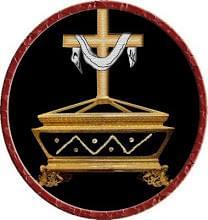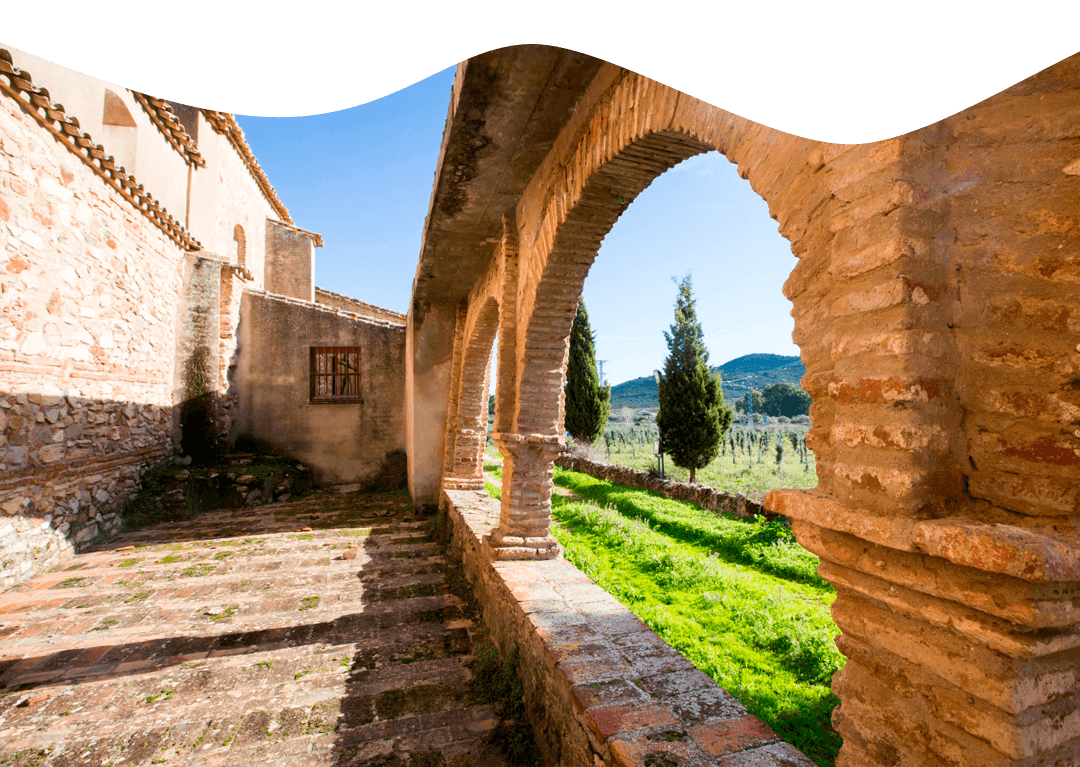Hermandad Del Santísimo Cristo En El Santo Sepulcro Y Nuestra Señora De La Soledad

Escudo
Hermandad del Santísimo Cristo en el Santo Sepulcro y Nuestra Señora de la Soledad (Brotherhood of the Holy Christ in the Holy Sepulchre and Our Lady of Solitude).
Canonical Headquarters:
Parish Church of Santa María de la Asunción.
Head Office.
Avda. de la Constitución, 26
Datos relevantes
Foundation.
It seems to date back to 1502, becoming official in 1514, having its headquarters in the old Franciscan convent of Nuestra Señora de la Piedad (today the Cemetery of San Francisco). On 31st December 1835 it passed to the Parish of Santa María de la Asunción on the disappearance of the convent.
Rules:
Its first Rules were approved by the Prior Rodrigo de Lorenzana on the 3rd of April 1592, as it appears in a file opened in 1601 and which is recorded in the General Archive of the Archbishopric of Seville, section III, Justice, Civil Affairs series, file 3719.
The current Rules were approved by the Archbishop of Seville on 18 November 2005.
In 1626 Pope Urban VIII granted indulgences to the members of the Brotherhood of Our Lady of Solitude by Bull dated 18th September, on the following festivities: the Sunday immediately following the feast of the Purification of Our Lady, Good Friday, Easter, Easter, the Invention of the Holy Cross, St. Francis, the sixth fair and the Sunday after Easter.
In 1747 the Brotherhood continued to be enriched with indulgences for the festivities of Friday of Sorrows, the last day of Easter, All Saints, the Assumption of Our Lady and Patriarch Saint Joseph, to which must be added the forty days granted in 1803 by Don José Casquete de Prado, Prior of San Marcos de León, to the faithful who recited a Creed to the Most Holy Christ in the Holy Sepulchre and a Salve to Our Lady of Solitude.
Images:
Christ in the Sepulchre is the work of the Olot workshops, dated 1954.
The image of the Virgin was made by the sculptor José Manuel Rodríguez Fernández Andés, a disciple of Illanes and Castillo Lastrucci, who left us a work full of dramatic expression. It was restored in 1983 by Antonio García Romero (professor of Fine Arts) and Matilde García Muñoz, a disciple of Buiza.
Passage of Christ.
Magnificent rectangular urn, with Baroque carved ornaments and topped by the figure of the pelican, alluding to the sacrifice of the Redeemer, accompanied at the four corners by figures of little angels, it goes on a basket of the same style with a basket and vents, illuminated by candelabra of windshields, carved by Francisco Escote in 1954. It has been restored in gilding some years ago by the Carrasco workshops in Zafra. It is alternatively adorned with purple lilies or roses and red carnations.
Passage of the Virgin.
It is by the same author, although of a slightly earlier date, it shows a splendid carved and gilded wooden basket in baroque style, on which rests candelabra on each corner and ornamented with leaves. It has been restored by Manuel María Rosendo Sánchez, who has added a series of relief cartouches representing the themes of the Pietà, Jesus tied to the column, Jesus the Nazarene and the Fifth Anguish, with cherub heads in the corners. The cross is from 1951 and the candelabra and jars from 1981, made in Talleres de Viuda de Villarreal.
The whole paso is currently being gilded by Paco Pardo Jiménez in his workshops. The front, the baskets on the sides and the candelabra have been gilded to date.
The image wears a black cloak embroidered in gold, made and donated by the Caballero sisters at the end of the 19th or beginning of the 20th century. It has been restored and transplanted to new velvet by Miguel Ángel León.
Tunics.
Black, with red buttons and cincture.
Accessories.
Cross of Guide by José Muñoz from 1982, anonymous Senatu, very old piece, Guion by Francisco García Serrano.
Worship.
It celebrates its services (Septenary) in the week before the week of the Passion and for the faithful departed in the month of November.
This year is the seventy-fifth anniversary of the Image of Christ, so several activities will be celebrated, Triduum, Main Function of Institute, Kissing, Poster, exhibition and probably Via Crucis.
Processional Parade.
It carries out its Processional Station on Good Friday at 8 o’clock in the evening through the streets of Guadalcanal and accompanied by representation of the Brotherhoods and Authorities. Christ is carried in silence. And the Virgin accompanied by the Alanís Musical Association.
A total of 120 Nazarenes parade in the procession. The Paso del Cristo is carried by 24 Costaleros and the Virgin by 28. Capataces two in the Christ and two in the Virgin.
Social functions:
It brings help to the Parish and to Caritas. And it carries out with the other brotherhoods the Operation Kilo.
It is united to the Associations of “ORGAN DONORS AND TRANSPLANTS”. Through the Brotherhood and together with the Town Hall, a square is dedicated to organ donors and on the Saturday before Easter Sunday, a donor or organ transplant lights a candle on the statue of the Virgin with the title “SOLEDAD DE VIDA” (LONELINESS OF LIFE).
Number of brothers and sisters of the Brotherhood.
Four hundred and forty-one brothers and sisters.
Name of the Elder Brothers or Sisters of the Brotherhood from its foundation to the present day.
As the first book of the Brotherhood has disappeared, it is impossible to compile all of them.
Mellada of the Town Hall of Guadalcanal.
In 2012 the Guadalcanal Town Hall awarded the Guadalcanal medal to the image of Our Lady of Solitude, on the occasion of the 75th anniversary of the sacred image of our patron saint.
The medal was awarded in the Paseo del Palacio by the Mayor of Guadalcanal, Jesús Manuel Martínez Nogales.
Among other events was a proclamation by Dª Clotilde Uceda.
In the year 2021 we celebrated the 75th anniversary of the image of our titular Santísimo Cristo Yacente en el Santo Sepulcro.


